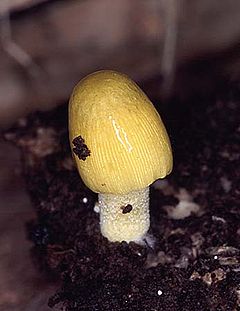Carnivore — Carnivorism redirects here. For the diet, see No carbohydrate diet. For other uses, see Carnivore (disambiguation). Lions are voracious carnivores; they require up to seven kilograms (15 lbs) of meat per day. A major component of their diet is… … Wikipedia
Photosynthesis — Composite image showing the global distribution of photosynthesis, including both oceanic phytoplankton and vegetation … Wikipedia
Theoretical ecology — Mathematical models developed in theoretical ecology predict complex food webs are less stable than simple webs.[1]:75–77[2]:64 … Wikipedia
Predation — For alternative meanings of predator and prey, see Predator (disambiguation) and Prey (disambiguation). Predating can also mean dating earlier than : see wiktionary:predate. Indian Python swallowing a small Chital deer at Mudumalai National Park … Wikipedia
Bioaccumulation — refers to the accumulation of substances, such as pesticides, or other organic chemicals in an organism. [1] Bioaccumulation occurs when an organism absorbs a toxic substance at a rate greater than that at which the substance is lost. Thus, the… … Wikipedia
Nocturnality — Owls are well known for being nocturnal, although some owls are active during the day. Nocturnality is an animal behavior characterized by activity during the night and sleeping during the day. The common adjective is nocturnal . Nocturnal… … Wikipedia
Ecological niche — Black smokers create ecological niches with their unusual environment In ecology, a niche ( … Wikipedia
Invasive species — See also: List of invasive species, Introduced species, Pest (organism), and Weed North American beavers constitute an invasive species in Tierra del Fuego, where they have a substantial impact on landscape and local ecology through their… … Wikipedia
Commensalism — A titan triggerfish (Balistoides viridescens) creates feeding opportunities for smaller fish by moving large rocks too big for them to shift themselves. In ecology, commensalism is a class of relationship between two organisms where one organism… … Wikipedia
Heterotroph — Overview of cycle between autotrophs and heterotrophs A heterotroph (English pronunciation: /ˈhɛtərɵtroʊf/; ἕτερος heteros = another , different and τροφή trophe = nutrition ) is an organism that cannot … Wikipedia



